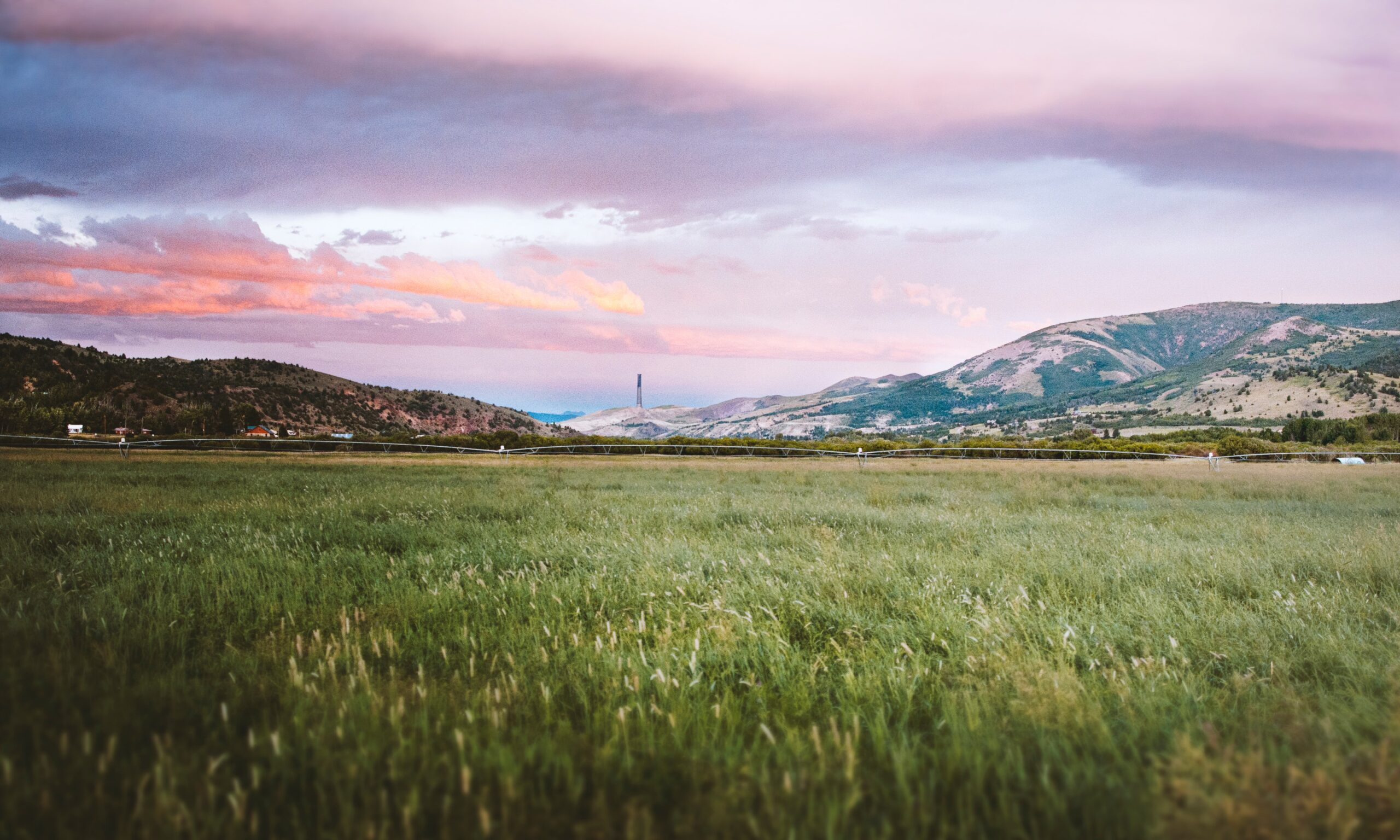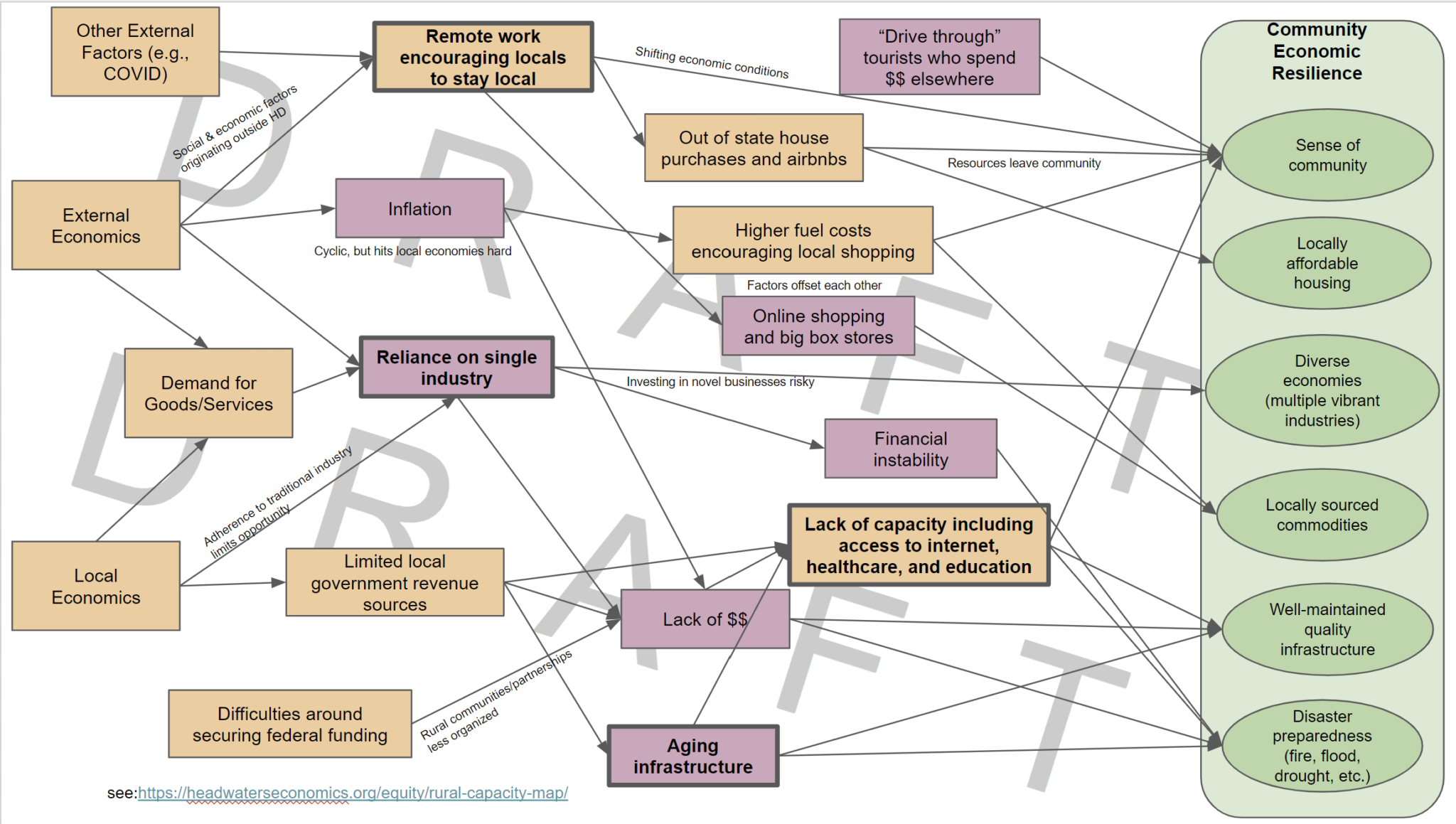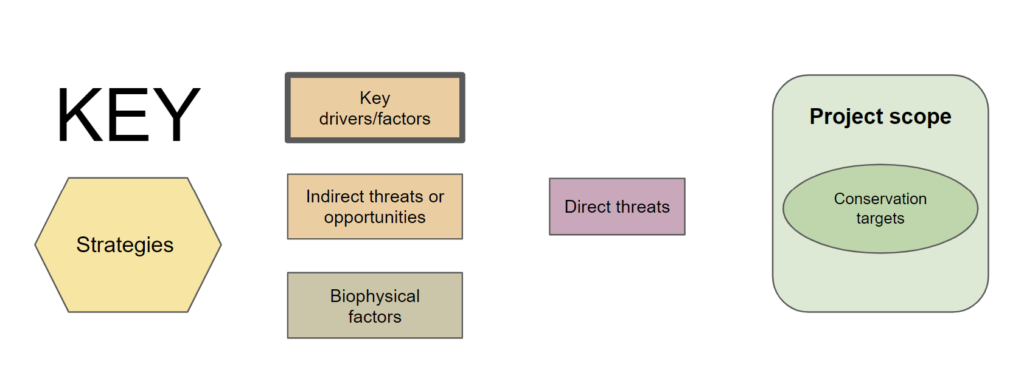Community Vitality

Approximately 1,011,000 people reside in the High Divide landscape, most of whom are socially tied to one of the more than 248 incorporated or unincorporated community centers. Communities vary widely in size, proximity to valuable commodities, elevation, tax base, local economy, and access to public lands, government resources, and air and ground transportation. Even so, communities across the High Divide experience similarities in terms of threats to their persistence, stability, and vibrancy as well as opportunities to address those threats, sustain resilience and continue to deliver the things people need from these social nodes and networks.
Qualities that local communities deliver, or that should be considered important goals to sustain economic resilience include: a sense of community; local and affordable housing; diverse economies (multiple vibrant industries); locally sourced commodities; well-maintained quality infrastructure; and disaster preparedness. Direct threats to the resilience of most High Divide communities are both nonlocal–such as the state of the national economy–and local–such as aging infrastructure–have been further amplified by the COVID-19 pandemic.
Some communities that were experiencing a population decline 5-10 years ago are now seeing population increases due to novel remote work opportunities and from newly arriving residents who are fleeing urban and other socially or climatically unfavorable areas. Because factors like access to air travel, tax burden, recreational opportunities and water availability influence where new residents settle, services such as healthcare and emergency response are underserviced and unprepared. Other communities that depend on a very siloed economic industry remain isolated as low population and a low tax base contribute to uncertainty in community stability and persistence. Often strong faith and other social networks such as school and local industry knit these communities as a source of resilience.
Strategies to build, maintain, and sustain economic resilience in both of these kinds of communities will vary. Encouraging people to shop locally, increasing availability of affordable housing, and diversifying industrial reliance are some examples of practices that could foster resiliency throughout the High Divide.
Photo: Steven Cordes | Unsplash
Draft Conceptual Model

